Staying Afloat: Navigating Flood-Resistant Design Requirements in Massachusetts
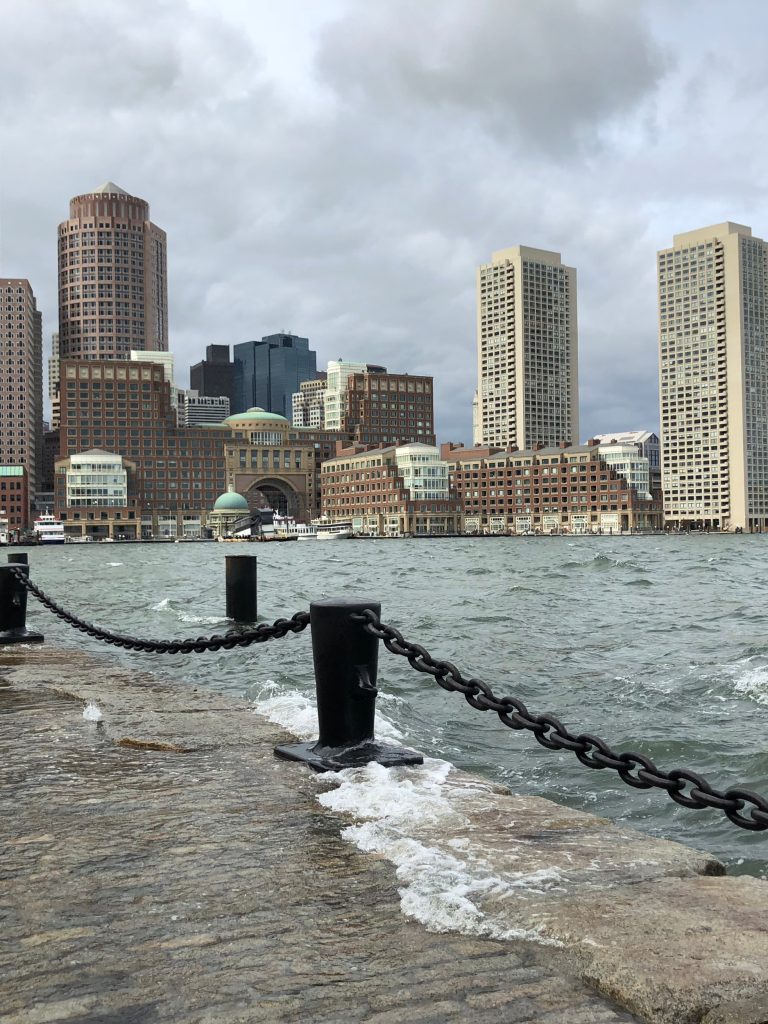
Flood risk is a growing concern for the built environment, and navigating the ever-changing landscape of flood regulations as a building owner, developer, or designer can be challenging. Flood provisions are numerous, complex, and often conflicting, and they can have a significant impact on the overall design and viability of a project.
In Massachusetts, both state- and municipal-level codes contain flood-resistant design requirements that are highly dependent on project location. The recently published tenth edition of the Massachusetts State Building Code (MSBC, 780 CMR) incorporates new regulations and structural requirements, including more stringent flood provisions than its predecessor to encourage more resilient buildings. In the present environment of rapidly worsening flood hazards, it is crucial to understand future risks and consider these flood provisions throughout a building’s lifecycle from inception and programming through design, construction, and operation.
NEW AND CHANGING FLOOD RISKS
Flooding is one of the nation’s most costly natural hazards, contributing to billions of dollars of damage to our built infrastructure every year. At the same time, sea level rise and other consequences of climate change are projected to worsen these issues in the future. Most jurisdictions throughout the United States impose flood-resistant design provisions that align with the minimum requirements of the National Flood Insurance Program (NFIP), which adopts the 1%-annual-chance flood (also known as the “100-year” flood or the “Base Flood”). Therefore, at a minimum, most local codes promote flood design requirements based on the 100-year flood, as depicted in the Federal Emergency Management Agency’s Flood Insurance Rate Maps (FIRMs).
Many existing buildings lie in areas at risk of flooding without any mitigation measures, either because they predate modern flood-resistant design standards and have not undergone a substantial improvement, because the regulatory FIRMs have recently changed and designated the area at greater flood risk, or because the area of flood risk is too small to be mapped on the FIRMs (i.e., local flooding). In some jurisdictions, even new buildings are often designed and constructed based on outdated or inaccurate FIRMs, leading to a higher degree of flood risk than an owner, developer, or designer might expect. Because of these changing risks and the multidisciplinary nature of the design, flood mitigation measures may be improperly designed, constructed, maintained, or implemented and fail to perform as intended during a flood event.
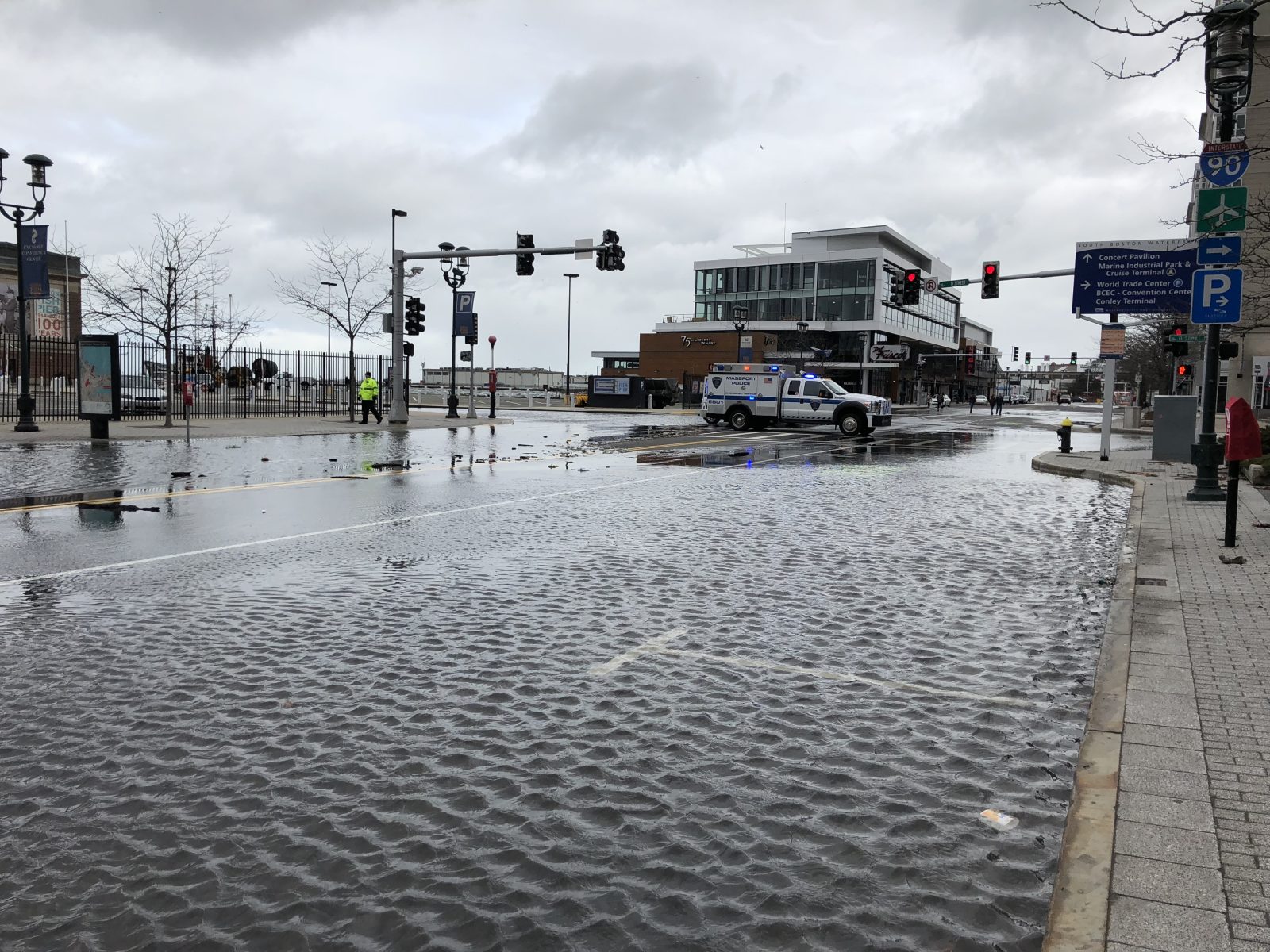
LOCAL FLOOD REGULATIONS OFTEN EXCEED NATIONAL REQUIREMENTS
As a result of these various challenges, some communities—such as Massachusetts and New York City—have begun implementing enhanced flood regulations that go well beyond the minimum requirements of the NFIP. These regulations are typically aimed at addressing the following concerns:
- Risk of flood events exceeding the 100-year flood mapped on the FIRMs
- Increasing severity and frequency of flooding due to climate change
- Improperly designed and constructed buildings in flood hazard areas
- Inadequate operational and maintenance programs for flood mitigation systems
- Existing buildings without any means of flood protection
- Gaps and loopholes in traditional flood design requirements
Enhanced flood regulations are often complex and may conflict with one another, posing a challenge to designers seeking to obtain approval for a project. Failure to meet the requirements can impact a project’s viability.
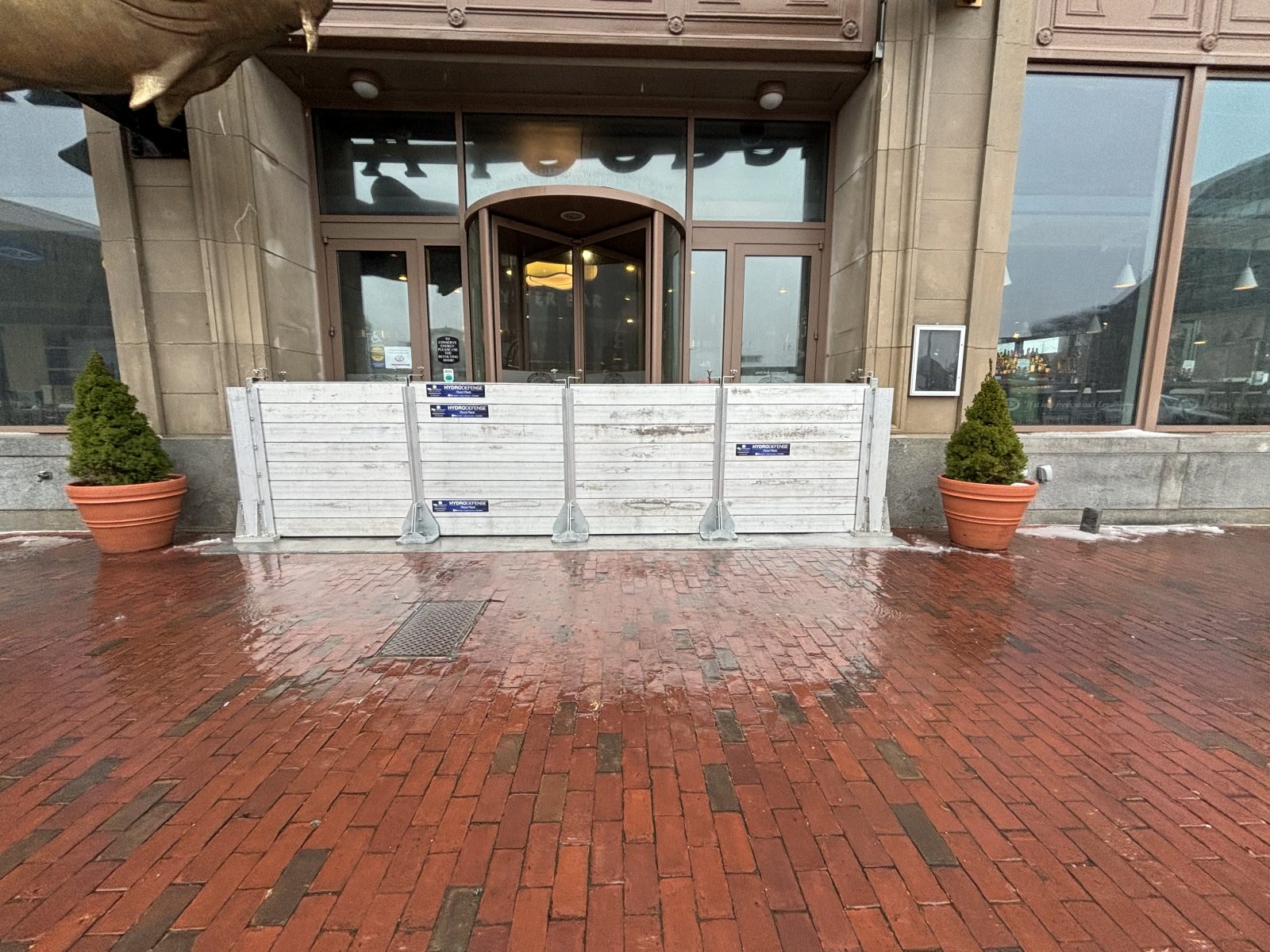
RECENT CHANGES TO FLOOD-RESISTANT DESIGN PROVISIONS IN MASSACHUSETTS
Massachusetts is no stranger to flooding. Several types of flood hazards can occur throughout the commonwealth, including coastal flooding from hurricanes and nor’easters, riverine flooding along overwhelmed rivers and streams, and pluvial (local) flooding from surcharged stormwater drainage systems. The tenth edition of the MSBC includes updates to the flood-resistant design requirements for new and existing buildings. Most notably, these updates include the following provisions:
- Much more stringent requirements for all new construction and for substantial improvements of existing residential buildings within Coastal A Zones. Substantial improvements are any reconstruction, rehabilitation, addition, or other improvement of a building where the project cost exceeds 50% of the building’s initial market value. Coastal A Zones are areas subject to coastal flooding where the wave height is expected to be between 1-1/2 and 3 ft during the Base Flood event. The new rules for Coastal A Zones are generally the same as the longstanding requirements for V Zones.
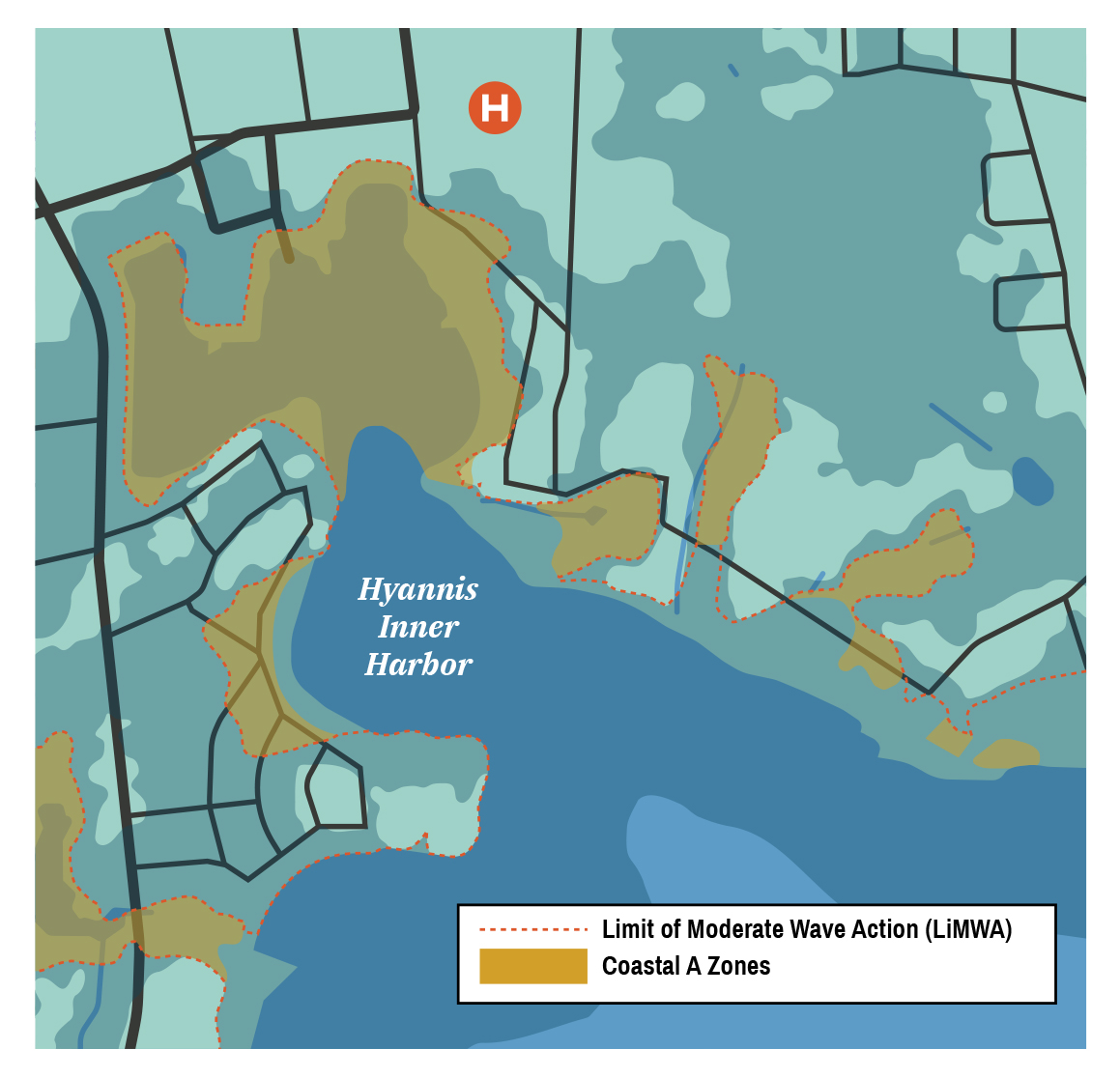
- A 1-foot increase to the minimum required freeboard for all categories of buildings. Freeboard is added to the mapped Base Flood Elevation (BFE) to increase the margin of safety and to account for uncertainties in flood modeling and mapping.
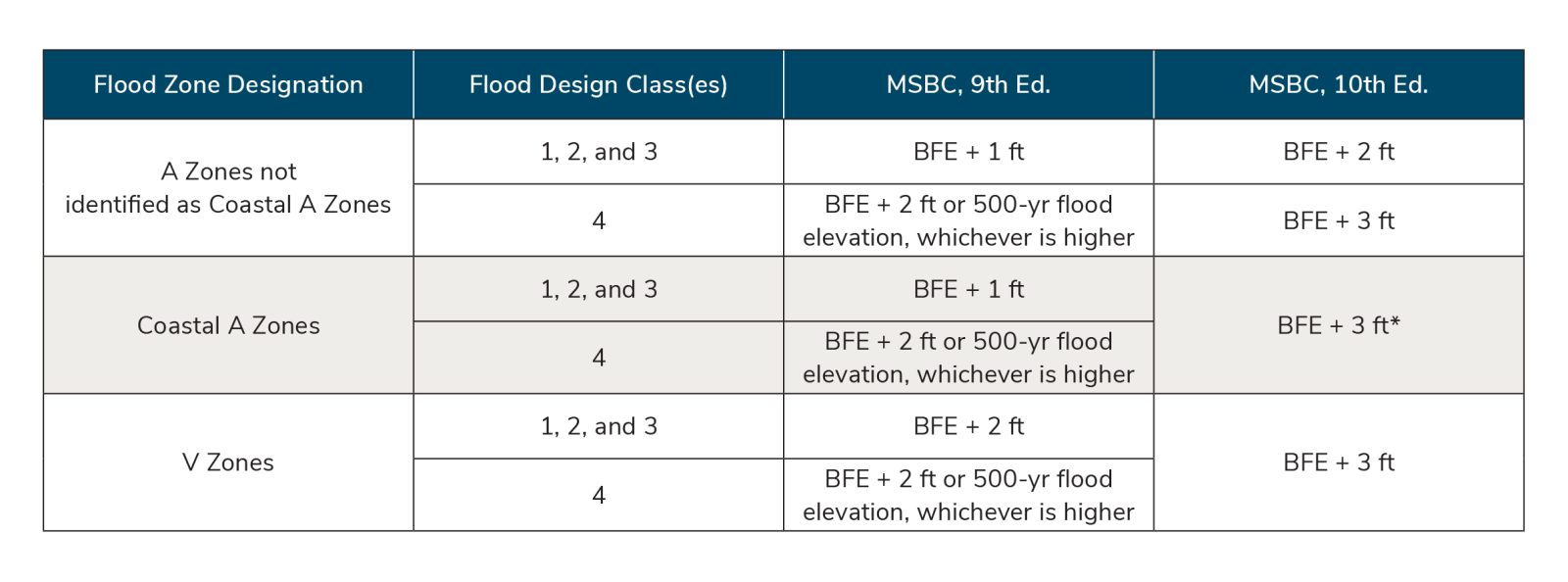
Meanwhile, municipalities frequently impose enhanced design requirements that differ from or even exceed those of the MSBC. The following selected examples are not an exhaustive list, but rather a sampling of the various types of policies that aim to regulate flood-resistant construction at the local level:
- Boston Zoning Code, Article 25A Coastal Flood Resilience Overlay District provisions enforce flood-resistant design requirements over a more extensive flood hazard area (with corresponding flood elevations) representing a future 100-year coastal flood scenario in the year 2070.
- Cambridge Zoning Ordinance, Section 22.80, Flood Resilience Standards require certain projects to be designed for a Long-Term Flood Elevation, representing the more severe of either a future coastal or pluvial flooding scenario and considering the effects of sea level rise and increased heavy precipitation, respectively.
- Newburyport Wetlands Protection Regulations direct project proponents to incorporate 40 in. of sea level rise into their designs.
REACTING TO A CHANGING REGULATORY LANDSCAPE
While even traditional flood mitigation design requirements can present challenges, enhanced regulations such as those in the MSBC and other local codes may require complex solutions that could prove disruptive if not identified and integrated during the early stages of a project. The prevalence of enhanced regulations is likely to increase in concert with the projected effects of climate change on future flood events and the inherent uncertainty of those projections. A successful flood mitigation design depends on knowledge of these rapidly changing requirements and a thorough understanding of site-specific flood hazards (both present-day and future), the technical aspects of flood mitigation, and the operational constraints for buildings.